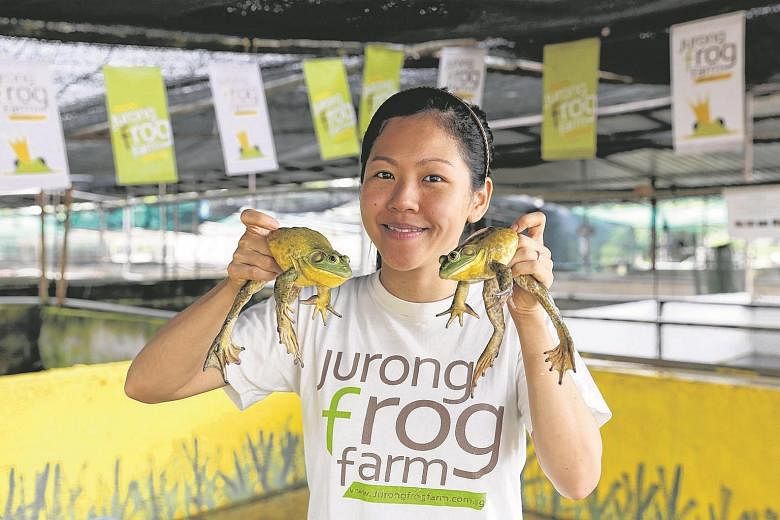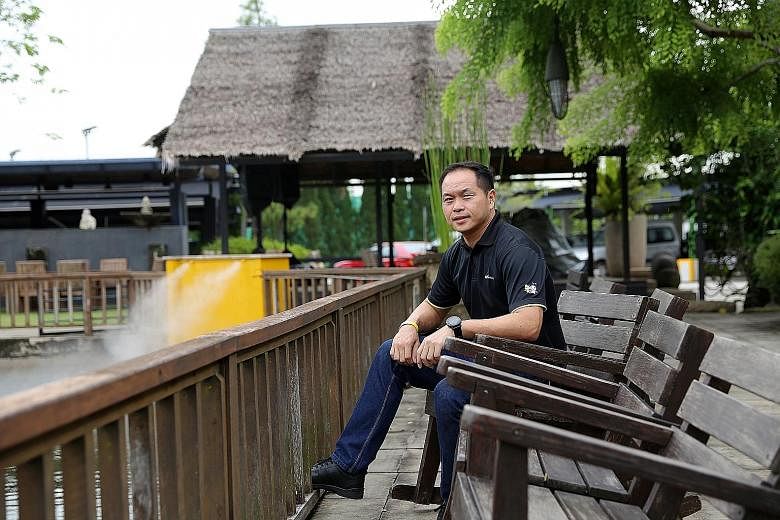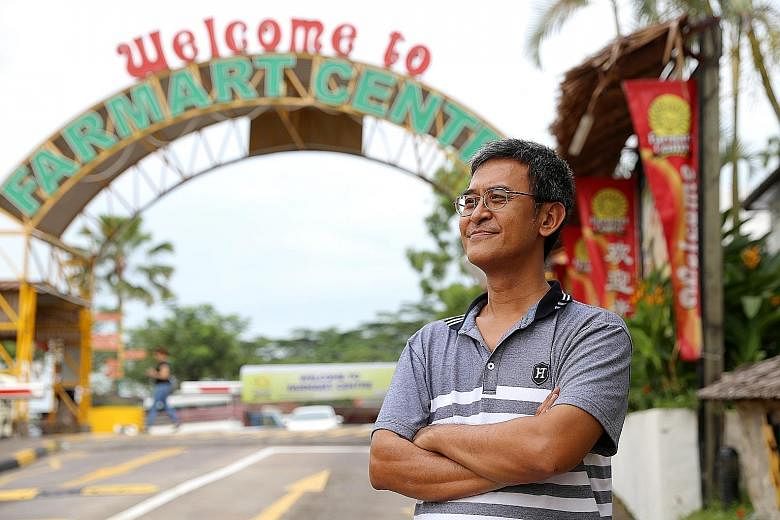Moving may be troublesome for many, but for farmers with bulky equipment and thousands of animals or crops in tow, the process can be downright painful.
Yet, farmers in Singapore tell The Sunday Times that if they have to move, they will, as long as they have the assurance that it will benefit them and the agriculture industry as a whole.
"We need to know that there is a plan, a direction. Are we moving blindly or would the move improve infrastructure and boost the industry?" says Mr Kenny Eng, president of the Kranji Countryside Association (KCA) that represents about 40 farms, many of which are family businesses.
Fourteen of its members, including goat farm Hay Dairies and Jurong Frog Farm, are among the 62 farms in an area in Lim Chu Kang which will be redeveloped to make way for the Defence Ministry's new training grounds. They were told earlier this month that they have to move out by the end of 2019.
The deadline had initially been June next year, but the Agri-Food and Veterinary Authority (AVA) pushed it back 2½ years to give farms more time.
Affected farmers will have the option of bidding for new farm land early next year, but the exact details of the location and size of the new plots available have yet to be announced.
With many questions going unanswered, uncertainty is looming large over Singapore's idyllic countryside, where farmers feel they are ploughing a lonely furrow at keeping their businesses and passions afloat.
One of those affected, 50-year- old quail farmer William Ho, is already considering a change. He says: "It may be too expensive to be a farmer after the move, but I can be a nature guide - children always enjoy hearing about my quails."
UNSUITABLE LAND
The Jurong Frog Farm, contrary to what many expect, smells surprisingly fresh. Its director Ms Chelsea Wan, 32, says the constant supply of running water from a well and reservoir within the farm helps.
But such amenities may not be available at the new site.
In fact, Ms Wan says the move might entail her farm moving into a factory, where frogs will be reared "without ever feeling sunshine or rain".
This is a no-no for the true-blue farmer, or the frog princess, as she is known in farming circles.
"We could work with our suppliers and establish farms overseas; we may just end up focusing on the factory packaging frog products.
"But we have family here in Singapore and it is less than ideal to have a farm overseas," says Ms Wan, who has an eight-month-old son.
For vegetable farmers, the quality of soil at the new site matters too.
As vegetable farmer from Farm 85, Mr Tan Koon Hua, 48, puts it: "The quality of soil is essential to how crops turn out - it can't be contaminated with waste or contain many stones. We also have to cope with the extreme changes in weather patterns of late."
COSTS
Mr Ho, who is co-owner of Lian Wah Hang Quail and Poultry Farm, says the possible move could cost him about $10 million, including spending on infrastructure at the new site, such as power supply and a new slaughterhouse and processing plant that will allow him to scale up his enterprise and stay commercially viable.
Over at Hay Dairies, business director Leon Hay, 38, says that building double-storeyed barns to house his 1,000 goats would alone cost about $6 million. The layers are necessary because the new plot could be at least 50 per cent smaller than its current 2ha, he adds.
It could take between three and five years for the structure to be built, and another 10 years before investment costs can be recuperated, excluding any interests on loans, he says.
With the 20-year lease period announced by the AVA earlier this month, that leaves the firm about seven years to start making a profit, and only after at least 13 years of effort.
Mr Eng says: "If farms are given more flexibility to diversify revenue sources, they have a better chance to thrive in a challenging environment and, in turn, invest more in their core business of food production.
"Also, while production is important, creating the market and demand is just as important. Agri-tourism and agritainment contribute immeasurably to that."
LEASES
Earlier this month, AVA decided to go back to the original lease period of 20 years after getting feedback from farmers that the 10-year tenure, with a possible 10-year extension announced in 2014, was too short for investing in automation.
AVA chief executive Tan Poh Hong had said then that the longer 20-year lease tenure would provide more certainty to farms and allow them to invest in intensive, highly productive technologies that operate on minimal manpower.
The news was welcomed by farmers but, even then, they said the prospect of repeating the cycle of bidding for a new plot and building new structures every 20 years was a daunting one.
Farmers say an increase in productivity could be achieved in other ways besides automation. They are trying to innovate by coming up with new concepts and products.
At the frog farm, for instance, one new product is bottled hashima, the oviducts of mature female frogs that has the same "beautifying properties" as bird's nest, says Ms Wan.
They are also trying to attract young people into the sector, to avoid becoming a sunset industry.
This is done by coming up with fresh concepts that combine both agriculture and entertainment, such as farm visits and tours.
They also launched the Farmers' Market, the seventh edition of which will continue today between noon and 5pm at the Nyee Phoe Flower Garden.
Ensuring the longevity of the farms beyond their leases could benefit more than just the farmers.
As Hay Dairies visitor and financing manager, Madam Priscilla Chong, 41, told The Sunday Times last week: "It is good to keep the farms. Without them, children may have to go to farms in Malaysia or Australia, or even the wet market, to learn about animals."



